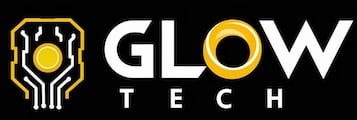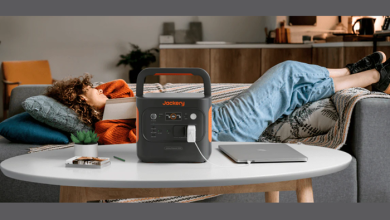
Introduction
Advertising, marketing, and user experience (UX) are fiercely competitive for attention. Every design element—from logos and headlines to calls-to-action (CTAs)—is in a silent contest to capture the viewer’s eye. The challenge is that attention happens fast, often within the first two to three seconds of visual exposure. If your creative assets fail to register instantly, your message risks being ignored or forgotten.
Live eye-tracking studies have been the gold standard for understanding how people view and interact with designs for decades. These studies provide valuable insights but are often costly, slow, and dependent on large groups of participants using specialized hardware. Many teams find these methods too time-consuming in a landscape where campaigns and digital experiences must be tested and launched quickly. That’s why predictive eye-tracking powered by artificial intelligence (AI) is emerging as a transformative solution. Tools like Brainsight allow brands, agencies, and UX professionals to instantly simulate how users view content—without traditional research’s logistical overhead.
What Predictive Eye Tracking Does Best
Built on computational saliency models trained with extensive live eye-tracking data, Brainsight’s predictive technology doesn’t track human behavior in real time. Instead, it forecasts what viewers will most likely notice within the first few seconds of exposure. The platform provides actionable outputs such as predictive heatmaps and gazeplots, making it easier to identify which areas of a design will attract instant attention. For teams looking to refine creative quickly and cost-effectively, it’s an ideal opportunity to try BrainSight and gain early insights before moving into full-scale user testing.
Beyond visual hotspots, Brainsight also integrates object and text recognition, enabling teams to confirm whether essential elements like logos, brand names, or CTAs land in high-attention zones. This ensures that critical brand assets are included in a design and positioned where they will be seen and remembered.
Predictive eye-tracking gives teams agility by removing the dependency on live participants or hardware. Campaigns can be tested, refined, and launched with data-driven confidence—all in minutes rather than weeks.
Why Instant Attention Matters
The concept of “instant attention” is rooted in neuroscience. In the first moments of exposure, the brain reacts reflexively to visual stimuli based on shape, color, contrast, and positioning. This bottom-up process is driven by automatic responses rather than conscious thought. Interpretation, emotion, and memory all come later.
Why is this important for marketers and designers? Because instant attention determines what elements get noticed first. Research from sources like the Advertising Research Foundation has shown that ads or designs with higher attention scores consistently deliver stronger outcomes, including higher click-through rates and better brand recall. If your logo, headline, or CTA isn’t captured in that early reflexive glance, the likelihood of later interaction drops dramatically.
Optimizing for instant attention is about improving visibility and saliency, not replacing live testing. Instead, predictive insights complement traditional methods by providing fast, scalable results at the earliest stages of creative development.
Practical Applications Across Industries
The versatility of predictive eye-tracking makes it valuable for multiple disciplines:
- Advertising pre-testing: Before committing to a budget for media buys, advertisers can test whether their creative captures the proper attention. Predictive heatmaps and attention scores offer a low-risk way to validate concepts early.
- UX and CRO optimization: UX teams can evaluate whether CTAs, menus, and navigation elements follow natural gaze patterns, reducing friction and making digital experiences more intuitive.
- Video editing and post-production: In video, where motion competes for focus, predictive gazeplots help editors ensure that essential overlays, text, or product shots are placed in visual hotspots.
- Brand analytics: Marketers can confirm that logos and brand cues appear in areas likely to attract attention, strengthening visibility and long-term recognition.
Each of these applications shares a common benefit: reducing uncertainty. Instead of guessing whether an element will be noticed, teams can rely on predictive outputs to make data-informed adjustments before a design goes live.
Context Through Benchmarks and Clarity Scores
Attention insights are powerful, but their value increases when paired with context. Brainsight enhances its predictive models with benchmark scores and clarity scoring.
- Benchmarks allow teams to compare their designs against industry peers, objectively measuring whether an ad or interface performs above or below average.
- Clarity scores highlight clutter and competing visual hotspots. Fewer distractions make it easier for viewers to process and recall the intended message.
Together, these features provide visibility into what’s working and actionable guidance on improving creative assets for maximum impact.
Looking Ahead
The rise of attention-based metrics is reshaping how the advertising and UX industries measure success. Traditional performance metrics like clicks and impressions tell part of the story, but don’t explain why some designs perform better than others. By focusing on instant attention, predictive eye-tracking provides a missing link: the ability to anticipate visibility before engagement occurs.
As brands continue to navigate cluttered digital environments, predictive solutions will become essential tools for refining strategy and protecting creative investment. They offer speed, scalability, and scientific grounding, making them a reliable addition to the creative process.
If you’re ready to see how predictive heatmaps, gazeplots, clarity scores, and attention benchmarks can elevate your work, you can try BrainSight today. Whether you’re an advertiser looking to pre-test campaigns or a UX professional aiming to optimize user flows, predictive eye-tracking gives you the clarity and confidence to design for attention from first glance.




